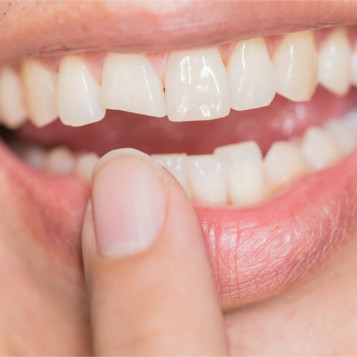Cracked Teeth
Because we are living longer and more stressful lives, we expose our teeth to many more years of crack-inducing habits such as clenching, grinding, and chewing on hard objects. These habits make our teeth more susceptible to cracks. Our doctors may be able to treat a cracked tooth to prevent further damage to the tooth structure and tissue.
Cracked teeth may not show any visible signs of damage, but will present with a variety of symptoms, usually erratic pain when chewing and pain or sensitivity to heat and cold. In many cases, the pain may come and go, making it difficult for a doctor to locate.
Why Cracked Teeth Hurt
When the outer hard tissues of the tooth are cracked, chewing can cause movement of the pieces, and the pulp can become irritated. When biting pressure is released, the crack can close quickly, resulting in a momentary, sharp pain.
Irritation of the dental pulp can be repeated many times by chewing. Eventually, the pulp will become damaged to the point where it can no longer heal itself. The tooth will not only hurt when chewing but may also become sensitive to temperature extremes.
In time, a cracked tooth may begin to hurt all by itself. Extensive cracks can lead to infection of the pulp tissue, which can spread to the bone and gum tissue surrounding the tooth.
Types of Cracked Teeth
There are many different types of cracked teeth. The treatment and outcome for your tooth depends on the type, location, and extent of the crack.
Craze Lines
Craze lines are tiny cracks that affect only the outer enamel. These are extremely common in adult teeth. Craze lines are very shallow, cause no pain, and are of no concern beyond appearance.
Cracked Tooth
This crack extends from the chewing surface of the tooth vertically toward the root. A cracked tooth is not completely separated into two distinct segments. Because of the position of the crack, damage to the pulp is common.
Root canal treatment is frequently needed to treat the injured pulp. Your dentist can then restore your tooth with a crown to hold the pieces together and protect the cracked tooth. At times, the crack may extend below the gingival tissue line, which requires extraction.
Split Tooth
A split tooth is often the result of the long-term progression of a cracked tooth. The split tooth is identified by a crack with distinct segments that can be separated.
A split tooth cannot be saved intact. The position and extent of the crack, however, will determine whether any portion of the tooth can be saved. In rare instances, endodontic treatment and a crown or other restoration by your dentist may be used to save a portion of the tooth.
Vertical Root Fracture
Vertical root fractures are cracks that begin in the root of the tooth and extend toward the chewing surface. They often show minimal signs and symptoms and may therefore go unnoticed until the surrounding bone and gum become infected.
Treatment may involve extraction of the tooth. However, endodontic surgery is sometimes appropriate if a portion of the tooth can be saved by removal of the fractured root.
Preventing Cracked Teeth
While cracked teeth are not completely preventable, you can take some steps to make your teeth less susceptible to cracks.
- Don’t chew on hard objects such as ice, unpopped popcorn kernels, or pens.
- Don’t clench or grind your teeth.
- Wear a mouthguard or protective mask when you play contact sports.
Early diagnosis is vital. Even with high magnification and special lighting, it is sometimes difficult to determine the extent of a crack. A cracked tooth that is not treated will progressively worsen, eventually resulting in its loss. Early diagnosis and treatment are essential for saving teeth.



 Website Powered by Sesame 24-7™
Website Powered by Sesame 24-7™